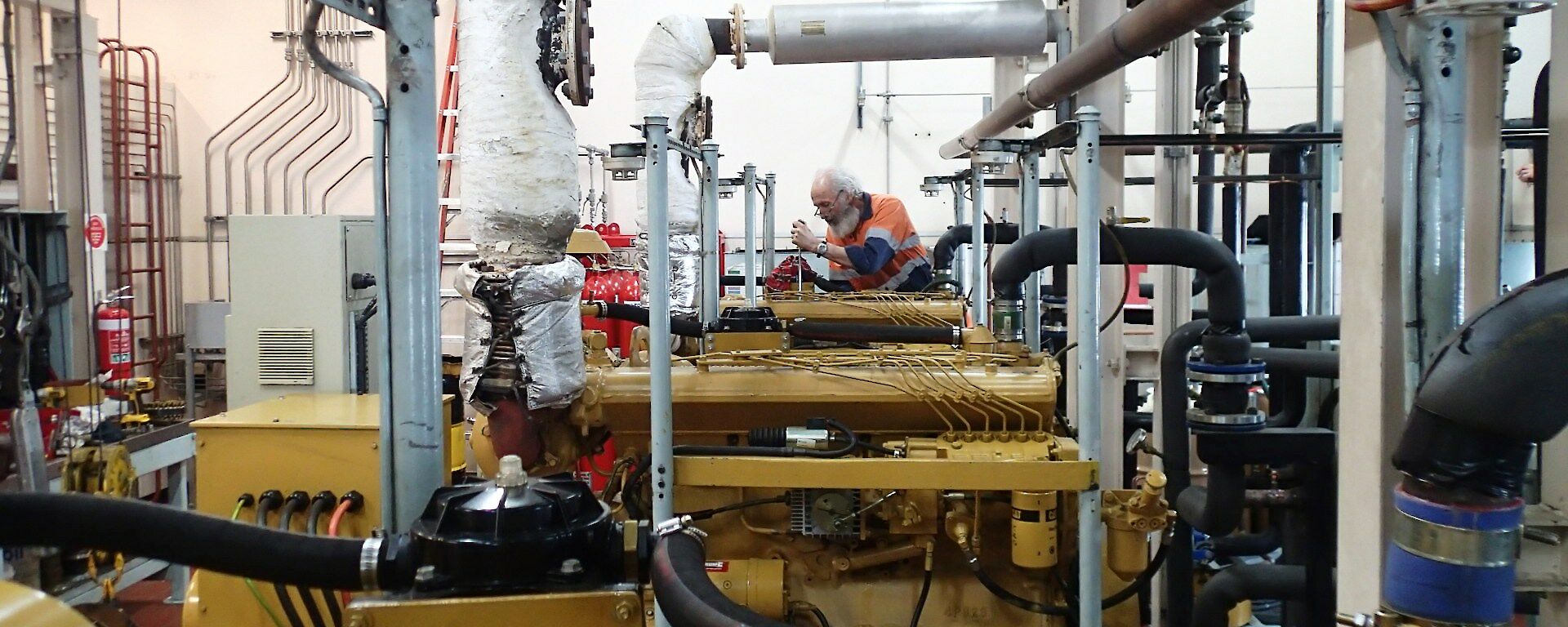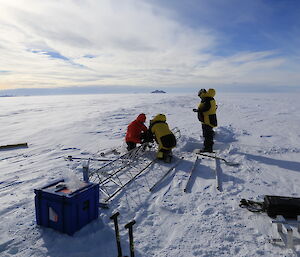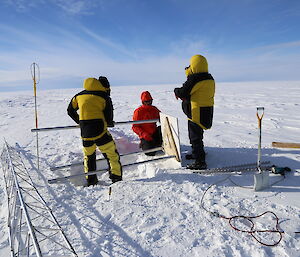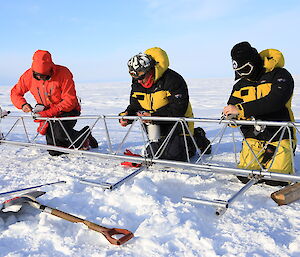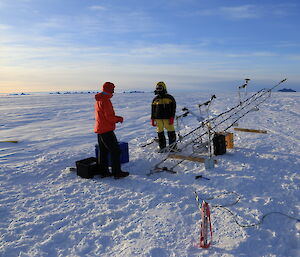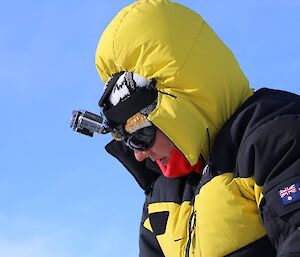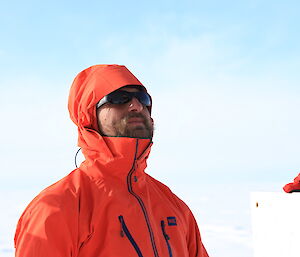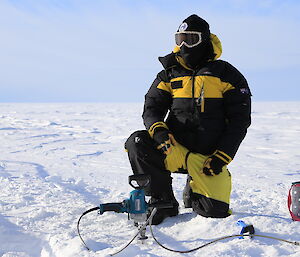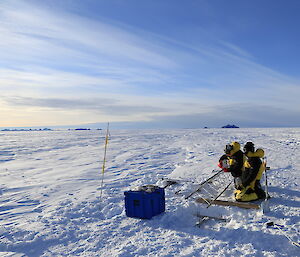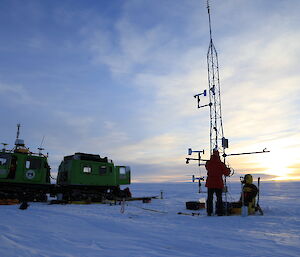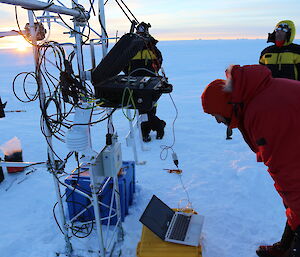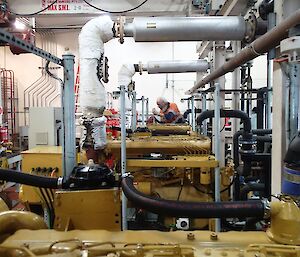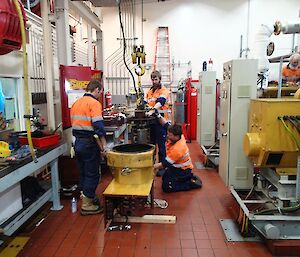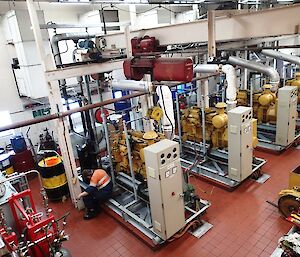The Antarctic Modernisation Program team were at Mawson for a month during November. I was lucky enough to spend time with them during field training and, later on, working in the area between the North Masson Range and Mt Henderson. I found the work really interesting; drilling holes in the snow/ice down to 12 metres and conducting temperature profiles at different depths.
One of their aims was to erect an Automatic Weather Station (AWS) approximately 20–30 kilometres south east of Mt Henderson. I wrote the following account in my diary on return to station:
“Unexpectedly, Cookie asked me to go with Barb, Stefan and Stewart on an overnight field trip to an area south east of Mt Henderson to act as a field guide and assist with the installation of an AWS.
“We didn’t leave Mawson until 1530 — not sure why! Barb drove up the Henderson cane line, then all the way to the junction of a 1962 dog sled route and a 1989 ANARE traverse route to the Prince Charles Mountains. The area was mostly snow covered and flat, with Russell Nunatak (an ice dome) the only feature. In a couple of short sections of blue ice we came across minor crevassing, but had no problems crossing them in the Hägglunds. The team, along with Cookie and Jose, had been out this way the previous week, proving the route to NMS 34, so we followed tracks in the snow along with the track on the GPS screen. Arriving at the junction at 1800 we immediately started work. The weather conditions were perfect: cloudy with occasional sunny breaks and minimal wind.
“Stefan knew exactly how the AWS went together and he allocated tasks to the rest of us. Many of the jobs were fiddly, most involving nuts, bolts, spanners and sockets; we all had cold fingers as a result. It was interesting to see how the AWS took shape and also very satisfying working as part of a small team in an isolated environment. It was an amazing place to be; the endless white of snow to the south and east; while to the north and north-west were the many mountains of the Framnes.
“Assembling the AWS was a slow process, even with everyone working non-stop. Just before midnight the sun set and it was 0230 when we finally finished and started to pack up. A good feeling of achievement was evident amongst our group as we fired up the Hägglunds and headed off for Henderson Hut. I drove as the others dozed, enjoying the sunrise and the vastness of the plateau. We stopped a couple of times to pick up bundles of canes which had fallen off the rear cab of the Hagg on the way up (not my knots!). Near Henderson Hut we had the choice of cold sleeping bags in a cold hut or our warm beds back in the Red Shed on station. It was an easy decision and I kept on driving! The descent from Gwamm on slippery ice was OK and we reached Mawson at 0515; tired but happy”.
John Burgess

